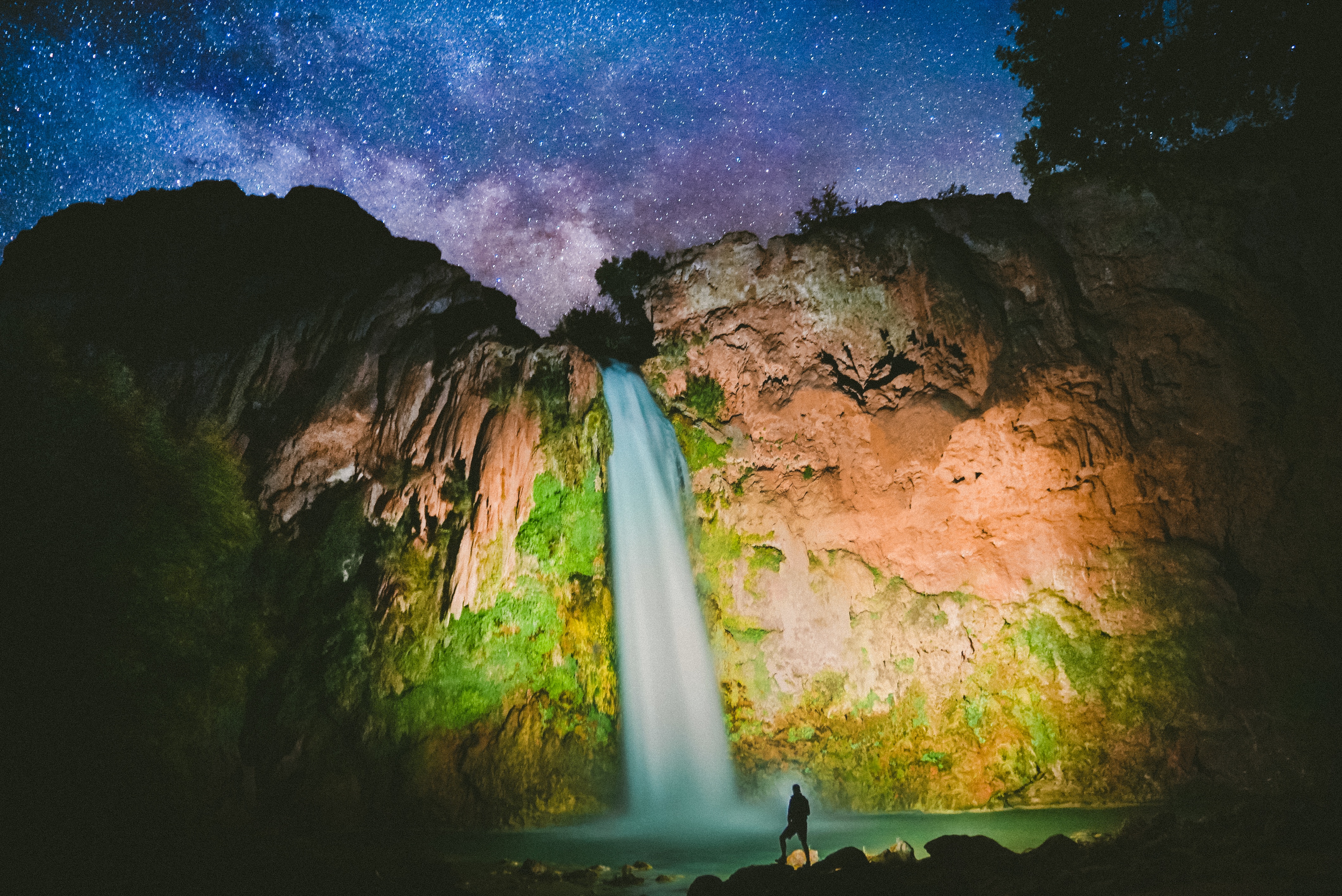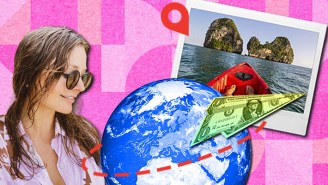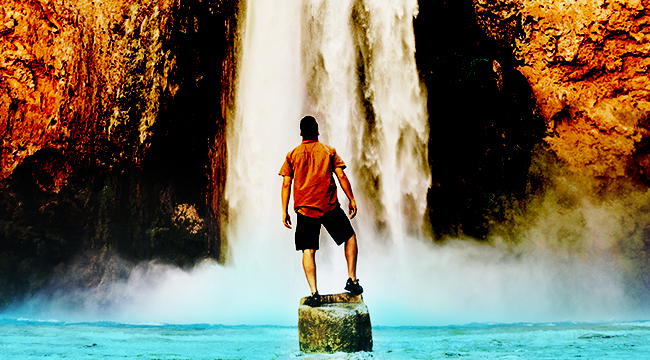
The first thing I remember about the hike to Havasupai, at the bottom of the Grand Canyon, is the heat. It was “drain your life force” heat. “Make your feet drag” heat. “Throat as dry as the sand you’re stepping on” heat. It bounced off the limestone, sandstone, and shale and wound its way across my body, engulfing me until the only words I could mutter with my leaden tongue were, “It’s… so… hot.”
Maybe there was an expletive at the end of that sentence. Probably not. Cursing would have required too much energy. It was no later than 11 am and I couldn’t have been more than two miles in, but I was already more than halfway through my water bottle. There was more water in my backpack, four gallons of it, but I’d need that for the days to come.
A line of pack mules clomped past, ankles wobbling slightly as they picked a path across the rocks. They were burdened with bags and water jugs. A few carried riders, who looked at me with a mix of guilt and pity.
“I should have put my backpack on a mule,” I mumbled, stepping under a shady rock overhang. (Though maybe I shouldn’t have, the Havasupai have come under scrutiny over the treatment of these animals.) I readjusted my pack, cinching the straps so tight across my hips that I felt short of breath. Anything to offload weight from my shoulders.
“How close you reckon?” my Aussie buddy Sam grunted.
“Not close,” I said, stepping out of the shadow cast by the overhang. “Not even close to close.”
I was right. We weren’t even close to close. The thing about the hike to Havasupai Falls is that you feel every inch of the eight miles down into the canyon before you arrive at Supai Village and every millimeter of the last two miles, to the famed falls and camping area. By that point, your pack is chafing, the tops of your ears are sunburnt, and your desire to have a conversation of any sort has been obliterated. It’s a strenuous, often agonizing trip.
Which begs the question: Is it worth it? Is a few days of fun at Havasupai worth the effort of the hike into the canyon? Is it worth the oppressive heat? Is it worth lugging your water in and your trash out? Yes. One million times, yes.
Trekking to Havasupai Falls — to dive into that iconic water, bask on the banks of the river, and hike up the creek bed — is one of the last great adventures in this country. It’s wild and raw in a way that so few experiences are these days and worth every ounce of effort. The peeled up toenails after stumbling on rocks. The sunburns that make your skin flake. The planning and racing to score reservations. All of it.
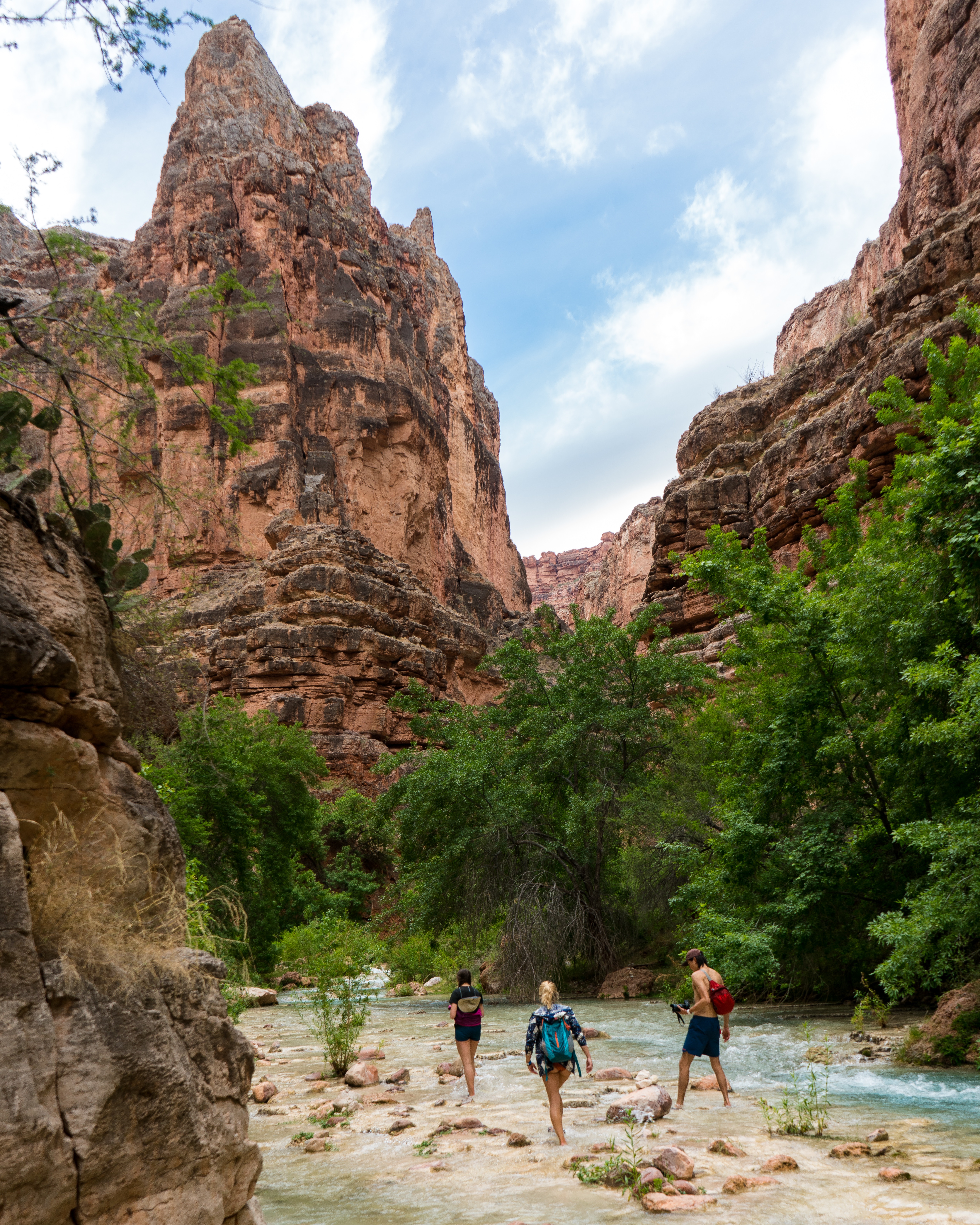
I’m not sure when exactly I heard about Havasupai Falls, on the Havasupai Indian Reservation. What I do remember is that one picture of the pale, almost milky-blue water was all it took for me to plan a visit. This was after the advent of Instagram but before the app made Havasupai more famous than any influencer. I know because I scored my reservation with ease — scooping up a cancellation the first time I called. And this was in mid-June; prime summertime.
Instagram’s travel boom really did change everything for the falls. There are 50 thousand posts for #HavasupaiFalls, 110 thousand for #Havasupai, and 60 thousand for #HavasuFalls (the main, most iconic of the five major falls in the canyon). Every travel blogger on earth seems to have a pic standing at the base of the plunging wall of water, spray sheeting their toned bodies. In fact, demand to see the falls skyrocketed so much and so quickly that the Havasupai Tribe (“People of the Blue Green Water”) was able to raise prices by more than $50 per person, per night in 2018.
This is a good thing. Supai, the most remote village in the lower 48, is one of the most economically depressed communities in the nation. The local school is currently suing the Federal Government over a failure to provide a proper education. And tourism is its lifeblood. Besides, increased prices didn’t dissuade anyone from planning a trip. This year, camping reservations on the Havasupai website sold out within minutes. The lodge is fully booked too. Outside tour operators have been banned from bringing groups into the canyon and therefore buying up all the spots. Your best hope for visiting in 2019 is to cross your fingers for cancelations (at the lodge or the campgrounds) and be ready to be spontaneous.
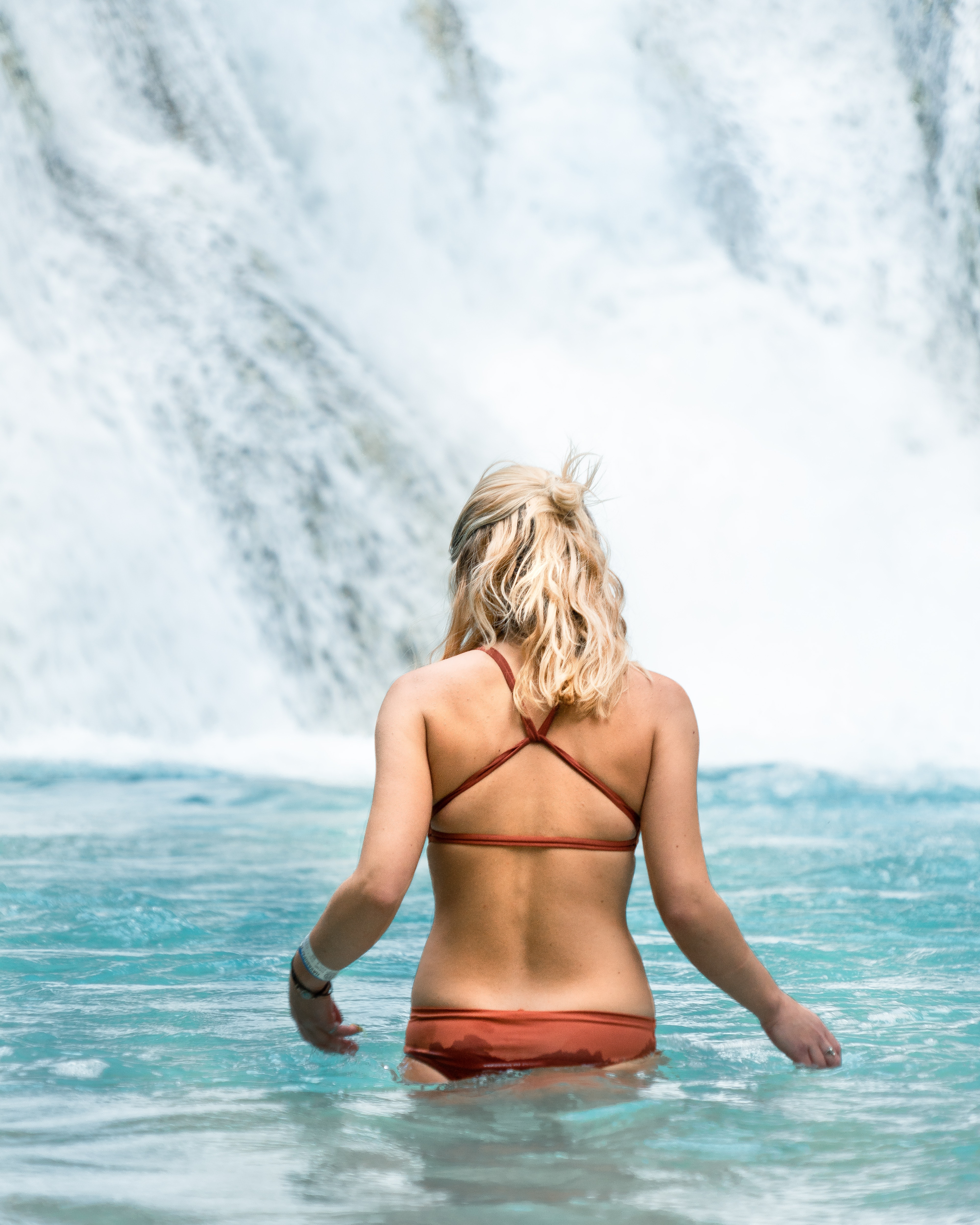
Bucket lists are a little bit ridiculous. We all know that. They imply that life is all about the tentpole moments, rather than the long stretches of less-thrilling spans between adventures. But to reject them completely is equally silly. It’s the nature of being human to want to see and do it all, and the nature of travelers to chase down the sorts of places that can give you chills, even when the sun is unrelenting and your legs feel like overboiled pasta held together with Big League Chew. Havasupai is just such a place.
I’ll never forget the moment I unshouldered my pack and stared down at the falls for the first time. The look of the water feels Photoshopped. We’re used to that level of artifice in travel photos, especially on Instagram. We look at images and know that someone somewhere dialed the saturation and contrast as high as they could possibly go. But not Havasu Falls. It’s the ultimate #nofilter destination.
The river is spring fed, rich in calcium and magnesium. On its way to the surface, the water collects high levels of carbon dioxide, which mixes with the minerals to become calcium carbonate (the same stuff that chalk is composed of). Not only does this water capture and disperse sunlight in an incredibly distinct way (it looks just like bantha milk from Star Wars) it also leaves deposits of travertine along the riverbed — forming an otherworldly, drip castle effect. It is, in a word, magical.
So yes, bucket lists are kinda corny; but also yes, this spot belongs on your bucket list. Standing on a high ridge, exhausted and sunburnt, with the roar of the falls in my ears, I felt a thrill that I’ve only felt a few other places on earth.
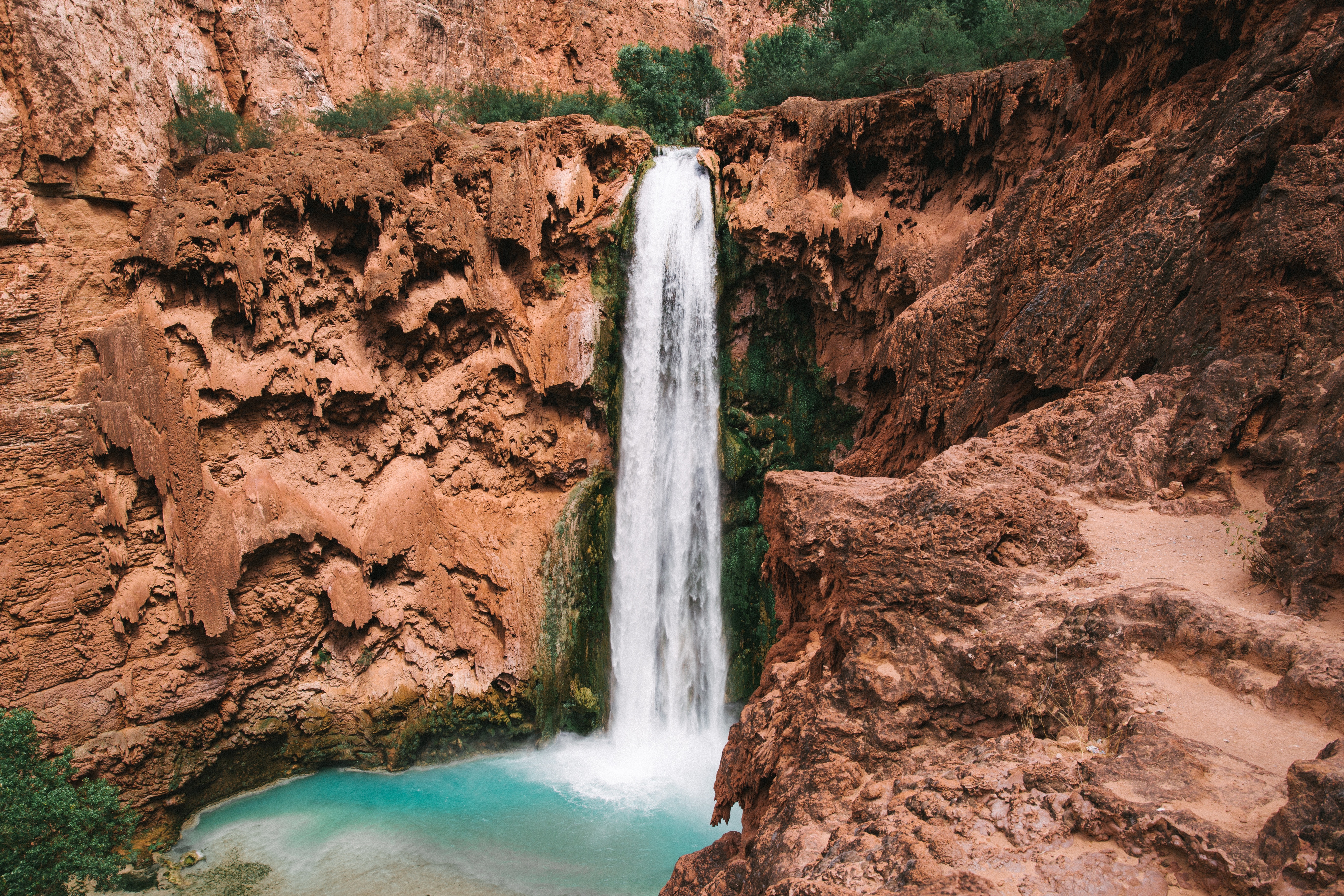
When the hike into Havasu falls was finally finished and the tent was set, I was hit by the realization that I had five full days to explore this Eden. For 120 hours there was nothing I wasn’t looking forward to. I would sit in the terraced cascades of Havasupai Creek, reading as the sun arced toward the edge of the canyon. I’d plunge off rocks into the water. Climb the system of rickety ladders to the lower falls. I’d lounge in our tucked away camping spot on the banks of the river.
Best of all, I promised myself, I would slow down. I would while away the hours marveling at the natural world, staring into the night sky, and dozing off to the whooshing of water.
When it was all over, Sam and I packed up for the hike back out. Our bags were lighter — we’d eaten all our food and only saved a bottle of water each — but we had every reason to dread the hike. This was the uphill trek, after all. And it was every bit as hot as the way in. Neither of us complained. Not at the five-mile mark, where I’d needed a full hour’s rest five days earlier. Not at the eight-mile mark, when the sandy river bed gives way to rocks just begging to permanently damage your ankle ligaments. Not even at the nine-mile mark, when the trail turns to a series of switchbacks ascending from the canyon floor, with agitated donkeys clacking past you, ready to buck you off the path.
Nothing could bother us. We had our memories to power us through. We had stories to playback. We’d had an experience, and it was worth every ounce of effort.
